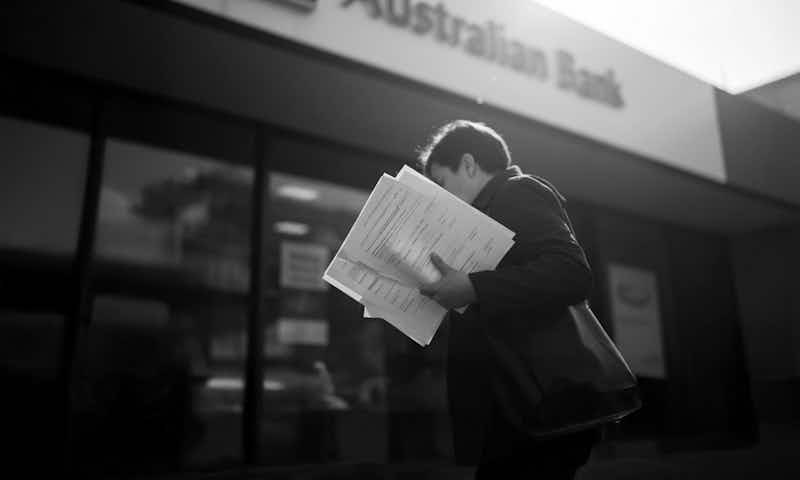When negotiations over realising property in bankruptcy end up in court.
Many readers will be familiar with the phrase “Without Prejudice” in both written and verbal communications. For those that have been fortunate enough not to come across this term, a without prejudice communication is typically used in settlement negotiations out of court.
When a communication is expressed on without prejudice terms those communications are inadmissible in court. Its intention is to enable parties to discuss the issues freely and to make a genuine attempt to settle a dispute without fear of those statements being repeated in court should negotiations fail.
However, we discovered exceptions to this rule in the following case[1].
We were appointed as bankruptcy trustee where we and the former bankrupt’s advisors engaged in without prejudice communications for around 18 months. The communications attempted to resolve the bankrupt’s proposals to purchase the bankrupt estate’s interest in real property, which had vested in the estate.

As it became clear a satisfactory position was unachievable, the bankruptcy trustee took transmission of title to the property and applied to court to obtain vacant possession and sell the property for the benefit of creditors.
One of the bankrupt’s[2] defences against the bankruptcy trustee’s application, was that the bankruptcy trustee was estopped (i.e. precluded) from dealing with the property because of “silence and inaction”. The alleged “silence and inaction” was in reference to the bankruptcy trustees not dealing with the property during the period of bankruptcy and for the entire period that the without prejudice communications were occurring.
To counter the claim, the bankruptcy trustee sought to adduce (i.e. admit into evidence) the without prejudice communications.
Section 131 of the Evidence Act 1995 provides relevantly that:
131 Exclusion of evidence of settlement negotiations
(1) Evidence is not to be adduced of:
(a) a communication that is made between persons in dispute, or between one or more persons in dispute and a third party, in connection with an attempt to negotiate a settlement of the dispute; or
(b) a document (whether delivered or not) that has been prepared in connection with an attempt to negotiate a settlement of a dispute.
(2) Subsection (1) does not apply if:
(g) evidence that has been adduced in the proceeding, or an inference from evidence that has been adduced in the proceeding, is likely to mislead the court unless evidence of the communication or document is adduced to contradict or to qualify that evidence
There was no dispute that the communications fell within the scope of section 131(1) such that they attracted without prejudice privilege. The question became whether the exception in section 131(2)(g) applied.
The bankruptcy trustee maintained that the bankrupt waived privilege when they alleged silence and inaction by the bankruptcy trustee, and thereby created the need to submit evidence of those communications so not to mislead the court in respect of various issues in dispute in the proceeding.
In support of the bankruptcy trustees’ position, we relied on the reasoning of Bromberg J in Barrett Property Group Pty Ltd v Dennis Family Homes Pty Ltd (No 2) (2011) 193 FCR 479; [2011] FCA 276, that:
[s131(2)(g)] is addressing the need to ensure that reliance upon the privilege or protection is not the source of or reason for the court being misled. In other words, the privilege afforded by s 131(1) is not to be abused by allowing a party that has adduced evidence to use the privilege to hide the truth and mislead the court. That is the mischief to which the paragraph is directed.
Ultimately, the judge found in favour of the bankruptcy trustee, noting that the “relevance and centrality of the issue on which the court is likely to be misled is critical…To disallow the admission into evidence of the privileged communications, the very fact and existence of which go to the basis of the pleaded case, would be to allow the court to be misled.”[3]
Ironically, had the bankrupt ‘stayed silent’ on the alleged silence and inaction, the evidence (which was potentially unfavourable to the bankrupt’s case) wouldn’t have been admitted into the central proceedings.
The key takeaway for readers?
Don’t rely on without prejudice communications always being protected communications. Given the right circumstances, they can be made admissible in court, whether it is for or against your/your client’s interest.
We now readily await the court’s decision on whether, and in what circumstances, there can be an estoppel against the vesting provisions of the Bankruptcy Act[4]. Stay tuned!
Related articles:
What can be taken or sold in a bankruptcy?
[1] Jess v McNiven, in the matter of McNiven [2021] FCA53.
[2] Who had been discharged from bankruptcy at the time the proceedings were issued.
[3] Jess v McNiven, in the matter of McNiven [2021] FCA53 [29].
[4] Notwithstanding the decision in O’Brien v Sheahan [2002] FCA 1292, the question of whether there can be an estoppel against the operation of the vesting provisions of the Bankruptcy Act is unresolved. Despite special leave being declined in O’Brien v Sheahan, in the application for it, each of Gummow J (line 74 at [AAB543] and line 179 at [AB545]) and Hayne J (line 135 at [AAB544]) expressed doubt that the doctrine of estoppel would act in the context of the statute. Their Honours said…The decision of the Federal Court from which special leave to appeal is sought in the two applications was dependent upon the conduct of the particular litigation. The decision of the Federal Court therefore should not be understood as establishing any generally applicable principle of law relating to estoppel in the administration of bankrupt estates [AAB 549].



